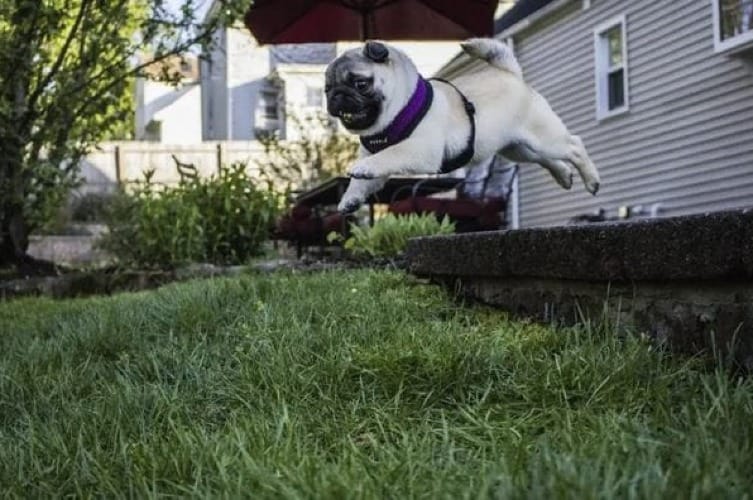Dogs are one of the most popular pets around the world, and for good reason. They are loyal, loving, and provide companionship to their owners. However, one of the biggest challenges of owning a dog is house training them. It can be a frustrating and time-consuming process, but some breeds are easier to train than others. In this article, we will explore the easiest dogs to house train.
When it comes to house training, some dog breeds are more receptive to training than others. These breeds tend to be intelligent, obedient, and eager to please their owners. While every dog is unique and may have their own quirks, there are certain breeds that are generally easier to train. By choosing one of these breeds, new dog owners can save themselves a lot of time and frustration during the house training process.
House training a dog requires patience, consistency, and positive reinforcement. It is important to remember that every dog is different and may require different training methods. However, by choosing one of the easiest dogs to house train, new dog owners can set themselves up for success and enjoy a happy, well-trained companion.

Factors Affecting Canine House Training
House training a dog can be a challenging task, but some breeds are easier to train than others. Several factors can affect a dog's ability to be house trained, including breed characteristics, age considerations, and temperament and trainability.
Breed Characteristics
Some dog breeds are naturally more inclined to be clean and obedient, making them easier to house train. Breeds such as the Poodle, Bichon Frise, and Labrador Retriever are known for their intelligence and eagerness to please their owners. These breeds are quick learners and respond well to positive reinforcement training.
On the other hand, certain breeds, such as the Beagle and Dachshund, have a strong prey drive and may be more difficult to train. These breeds may require more patience and consistency during the house training process.
Age Considerations
The age of a dog can also impact their ability to be house trained. Puppies have a smaller bladders and require more frequent potty breaks, making accidents more likely. However, puppies are also more receptive to training and can learn good habits quickly with consistent training and positive reinforcement.
Adult dogs may already have established bad habits, making it more challenging to break them. However, adult dogs may have better bladder control and can hold their urine for longer periods, making fewer accidents likely.
Temperament and Trainability
A dog's temperament and trainability can also play a role in their ability to be house trained. Dogs with a calm and obedient temperament are typically easier to train. However, dogs with a more stubborn or independent personality may require more patience and persistence during training.
Overall, there are several factors to consider when house training a dog. With patience, consistency, and positive reinforcement training, most dogs can be successfully trained to be clean and obedient in the home.

Top Breeds Known for Easy House Training
When it comes to house training a dog, some breeds are easier to train than others. Here are some of the top breeds known for their easy house training:
Labrador Retriever
Labrador Retrievers are one of the most popular breeds in the world, and for good reason. They are intelligent, friendly, and easy to train. Labradors are also known for their love of water, which can make them great pets for families who enjoy swimming or boating.
German Shepherd
German Shepherds are often used as police dogs or search and rescue dogs because of their intelligence and trainability. They are also great family pets and are known for their loyalty and protectiveness. German Shepherds are easy to house train because they are eager to please their owners and enjoy learning new things.
Border Collie
Border Collies are highly intelligent and energetic dogs that were originally bred for herding sheep. They are easy to train and excel at obedience and agility competitions. Border Collies are also great family pets, but they require a lot of exercise and mental stimulation to keep them happy and healthy.
Overall, these breeds are great choices for families who are looking for a dog that is easy to house train. However, it's important to remember that every dog is different, and some may require more training than others. With patience and consistency, any dog can be successfully house trained.
Training Techniques for Effective Housebreaking
Crate Training
Crate training is a popular method for housebreaking dogs. It involves keeping the dog in a crate when he is unsupervised in the house. Dogs naturally avoid soiling their sleeping area, so they will learn to hold their bladder until they are let out of the crate. It's important to choose the right size crate for your dog. The crate should be big enough for the dog to stand up, turn around, and lie down comfortably, but not so big that he can use one end as a bathroom and the other as a sleeping area.
Consistent Schedule
Consistency is key when it comes to housebreaking a dog. Establishing a consistent schedule for feeding, watering, and potty breaks will help your dog learn when it's time to go outside. Puppies may need to go outside every hour or two, while adult dogs can usually hold it for longer periods of time. Take your dog outside first thing in the morning, after meals, and before bedtime. Praise and reward your dog when he goes potty outside.
Positive Reinforcement
Positive reinforcement is a powerful tool for training dogs. When your dog goes potty outside, praise him enthusiastically and give him a treat. This will help him associate going outside with positive experiences. Never punish your dog for accidents in the house. Instead, interrupt him and take him outside immediately. Clean up accidents with an enzymatic cleaner to remove any lingering odors that might attract your dog back to the same spot.
By using these training techniques consistently and positively, you can effectively housebreak your dog and enjoy a clean and comfortable home.

Common Challenges in House Training
House training a dog can be a challenging task, especially for first-time dog owners. Some dogs may take longer to house train than others, and there may be certain challenges that pet owners may face during the process. Here are some common challenges that pet owners may encounter while house training their dogs.
Marking Behavior
Marking behavior is a common challenge that pet owners may face while house training their dogs. This behavior involves a dog urinating on vertical surfaces such as furniture, walls, and doors. Marking behavior is usually seen in male dogs that have not been neutered, but it can also be seen in female dogs.
To prevent marking behavior, pet owners should consider neutering their male dogs. Additionally, pet owners should supervise their dogs closely and praise them when they urinate in the appropriate spot. They should also clean any areas that have been marked with an enzymatic cleaner to eliminate the odor.
Submissive/Excitement Urination
Submissive or excitement urination is another common challenge that pet owners may face while house training their dogs. This behavior involves a dog urinating when they are excited or when they feel threatened or submissive. This behavior is more common in puppies and small dogs.
To prevent submissive or excitement urination, pet owners should avoid scolding or punishing their dogs. Instead, they should use positive reinforcement techniques such as treats and praise to encourage good behavior. They should also avoid overwhelming their dogs with too much excitement or attention.
Separation Anxiety
Separation anxiety is a common challenge that pet owners may face while house training their dogs. This behavior involves a dog becoming anxious and distressed when they are left alone. This can lead to destructive behavior such as chewing and digging.
To prevent separation anxiety, pet owners should gradually get their dogs used to being alone by leaving them alone for short periods of time and gradually increasing the duration. They should also provide their dogs with plenty of toys and activities to keep them occupied while they are alone. Additionally, pet owners can consider using calming aids such as pheromone diffusers or supplements to help their dogs relax.

House Training Adult Dogs vs. Puppies
House training a dog can be a daunting task, especially if you are a first-time dog owner. When it comes to house training, there are some differences between adult dogs and puppies that you should be aware of.
Adult Dog Considerations
House training an adult dog can be more challenging than training a puppy. This is because adult dogs may have already developed bad habits or may have been poorly trained in the past. However, there are some advantages to training an adult dog. For example, adult dogs have a longer attention span than puppies, which can make training sessions more productive. Additionally, adult dogs are often calmer and more patient than puppies, which can make the training process less stressful.
To successfully house train an adult dog, it is important to be patient and consistent. You should establish a routine for your dog and stick to it. Also, make sure to praise your dog for good behavior and avoid punishing them for accidents.
Puppy Training Advantages
Puppies are generally easier to house train than adult dogs. This is because puppies are still developing their habits and are more receptive to learning. Additionally, puppies have smaller bladders, which means they need to go outside more frequently. This can be an advantage because it allows you to establish a routine quickly.
To successfully house train a puppy, it is important to establish a routine early on. You should take your puppy outside frequently, especially after meals and naps. Also, make sure to praise your puppy for good behavior and avoid punishing them for accidents.
Overall, house training a dog takes patience and consistency, regardless of their age. With the right approach, any dog can be successfully house-trained.
Essential Supplies for House Training
House training a dog can be a challenging task, but with the right supplies, it can be made easier and more efficient. Here are some essential supplies that every dog owner should have when house training their furry friend:
Training Pads
Training pads are a must-have for house training puppies and dogs. These pads are designed to absorb urine and prevent it from spreading on the floor, making it easier to clean up. They come in different sizes and materials, so it's important to choose the right one for your dog's size and needs.
Cleaning Solutions
Accidents are bound to happen during house training, and it's important to clean them up properly to prevent odors and stains. There are many cleaning solutions available on the market, but it's important to choose one that is safe for pets and effective in removing stains and odors.
Treats and Clickers
Positive reinforcement is an effective way to train dogs, and treats and clickers are great tools to achieve this. Treats can be used to reward good behavior, while clickers can be used to mark the behavior that is being rewarded. It's important to choose treats that are healthy and appropriate for your dog's diet.
By having these essential supplies on hand, house training can be made easier and more efficient. With patience and consistency, any dog can be successfully house trained.

Health Considerations in House Training
Diet and Digestion
A dog's diet plays a crucial role in house training. Feeding a dog a consistent, high-quality diet can help regulate their digestive system, making it easier for them to hold their bladder and bowel movements until they are taken outside. A diet that is high in fiber can also help prevent constipation, which can lead to accidents in the house.
It is important to establish a feeding schedule for the dog and stick to it. This will help regulate their bowel movements and make it easier to predict when they may need to go outside. Additionally, limiting the dog's access to food and water a few hours before bedtime can help prevent accidents during the night.
Medical Issues Affecting Training
Certain medical conditions can affect a dog's ability to be house trained. For example, urinary tract infections can cause a dog to have frequent accidents in the house. It is important to take the dog to the vet if they are having trouble holding their bladder or if they are having accidents despite being house trained.
Other medical issues that can affect a dog's ability to be house trained include gastrointestinal problems, such as diarrhea or vomiting, and mobility issues, such as arthritis or hip dysplasia. These conditions may make it difficult for the dog to get outside in time to relieve themselves, and may require special accommodations during the house training process.
In summary, a dog's diet and overall health can greatly impact their ability to be house trained. By providing a consistent, high-quality diet and addressing any medical issues that may arise, owners can set their dog up for success in the house training process.
Professional Help and Resources
When it comes to house training a dog, sometimes professional help and resources can make all the difference. Here are a few options to consider:
Dog Trainers
Working with a professional dog trainer can be a great way to ensure that your pup is getting the best possible training. Trainers can provide one-on-one guidance and help you develop a customized training plan that works for your dog's individual needs. Look for trainers who specialize in positive reinforcement training, which has been shown to be the most effective and humane approach to training.
Online Guides
There are many online resources available for those who prefer to do their own research and training. Look for guides and articles from reputable sources, such as the American Kennel Club or the Association of Professional Dog Trainers. These resources can provide step-by-step instructions and helpful tips for house training your dog.
Training Books
For those who prefer to have a physical resource on hand, training books can be a great option. Look for books that are written by experienced dog trainers and that focus specifically on house training. Some popular options include "How to Housebreak Your Dog in 7 Days" by Shirlee Kalstone and "The Art of Raising a Puppy" by the Monks of New Skete.
Remember, every dog is different, and what works for one dog may not work for another. Be patient, consistent, and willing to adapt your approach as needed. With time and effort, you can help your furry friend become a well-trained and well-behaved member of your family.

Frequently Asked Questions
- Which breeds are known for being the most trainable for housebreaking?
- While every dog is unique, some breeds are known for being easier to house train than others. Breeds like the Labrador Retriever, Poodle, and Bichon Frise are often cited as being among the easiest to train for housebreaking.
- What characteristics make a dog breed easy to house train?
- Breeds that are known for being easy to house train often have a few characteristics in common. They tend to be intelligent, eager to please their owners, and able to learn quickly. Additionally, they may have a strong desire to keep their living space clean, making them less likely to have accidents indoors.
- How do hypoallergenic dogs compare in ease of potty training?
- Hypoallergenic dogs, like the Bichon Frise and the Poodle, are often cited as being easy to house train. While their hypoallergenic coat may require more maintenance, these breeds often have the same characteristics that make them easy to train for housebreaking.
- Are there specific training methods that work best for easily trainable dogs?
- Positive reinforcement training is often cited as the most effective method for housebreaking dogs, regardless of breed. This involves rewarding your dog for good behavior, rather than punishing them for accidents. Consistency and patience are also key when it comes to training any dog.
- By what age can most dogs be reliably house trained?
- Most dogs can be reliably house trained by the age of six months, although some may take longer. Consistency and patience are key when it comes to training any dog, and it's important to remember that every dog is unique.
- What are the common challenges when potty training breeds known to be difficult?
- Breeds that are known to be more difficult to house train, such as the Dalmatian or the Afghan Hound, may require more patience and consistency when it comes to training. These breeds may be more independent or stubborn, making them less eager to please their owners. It's important to remain consistent with your training and to reward good behavior to help overcome these challenges.




